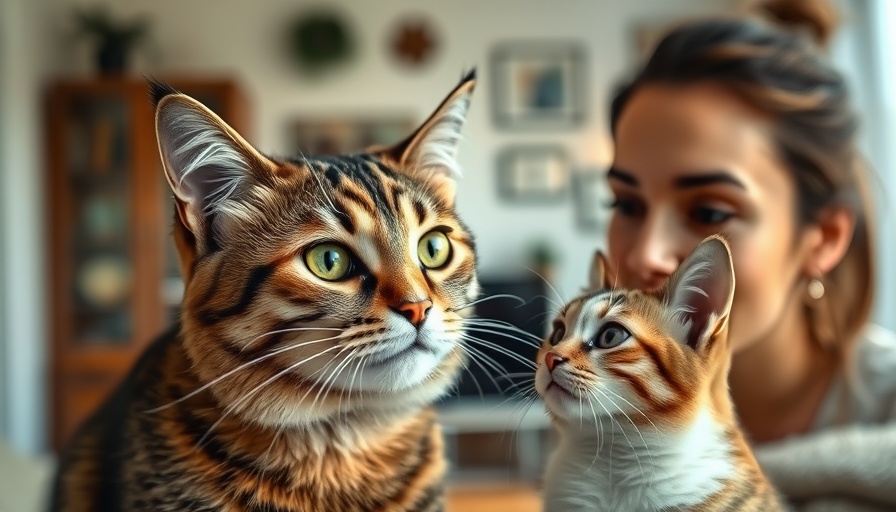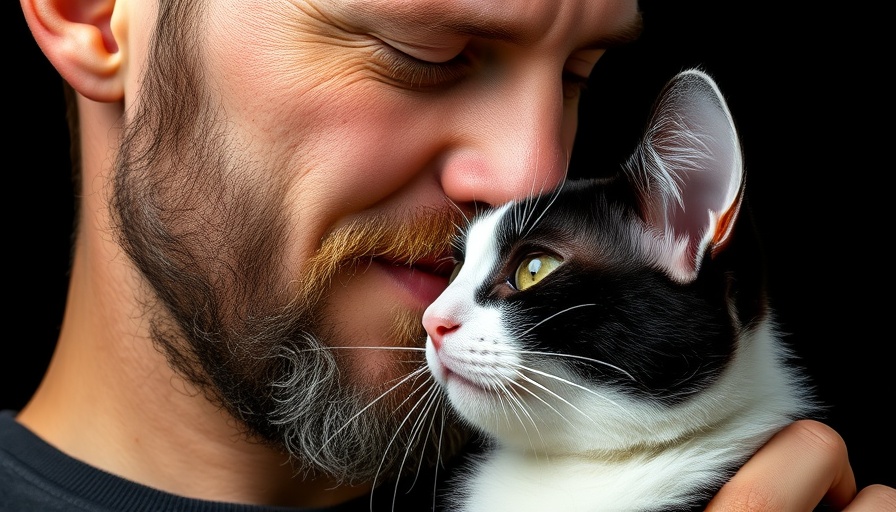
Why Your Cat’s Affection Might Not Be What You Think
As devoted pet parents, we often find ourselves in a world shaped by our cats’ behavior. We pour love into feeding them gourmet meals, providing the comfiest corners of our homes and basking in the moments when they curl up next to us. But if you've ever wondered if those purring sounds and gentle nudges are genuine affection or merely a sign of ownership, you’re not alone. The reality is that cats are stealthy in revealing their emotions. To truly understand your feline friend, we need to decode the signs they send us.
In 'If Your Cat Shows THIS Sign, They Don’t Really Love You,' the revelations about feline emotions lead to profound insights that we are further exploring in this article.
Head Bumps: More Ownership Than Love?
The first sign to explore is the famed head bump. When your cat gently nudges you with their forehead, your heart may flutter, reading it as affection. However, it might actually be more about marking territory. This gesture often means they've accepted you as a part of their space but may not necessarily correlate to love. Watch their body language; if they linger and continue to rub against you, you've won their affection. If they retreat quickly, it’s important to reassess how they perceive your relationship.
Tail Language: The Real Mood Indicator
Your cat's tail can be likened to an emotional mood ring. A relaxed cat may sway their tail gently but a quick flick or whip of the tail signals irritation. Understanding this can provide insights into your cat’s emotional state. Are they feeling content enough to enjoy your touch, or are they signaling their discomfort? It is crucial to pay attention to these cues to strengthen your bond.
The Meaning Behind the Blink
The slow blink, often considered a term of endearment in cat behavior, can be misleading. While a slow blink can signify trust, a rapid blink combined with head-turning might mean your cat is avoiding conflict. Recognizing this subtlety is key to differentiating between genuine affection and the instinctual need to avoid confrontation.
How Your Cat Eats Says It All
Eating habits can reveal a lot about your cat's feelings towards you. A cat that feels secure will eat calmly, possibly glancing up from their bowl. In contrast, a cat that feels unsure will position themselves in a way that guards against potential threats. This situation speaks volumes about how much they trust you.
Decoding Sleeping Preferences
Where your cat sleeps is a significant marker of their affection and trust level. A cat that curls up close to you while sleeping is showing vulnerability and deep trust. Conversely, if they choose to sleep in more isolated or elevated spaces, it suggests they may still harbor some reservations about your relationship. The way your cat chooses to rest can indicate whether they see you as a safe haven.
The Importance of Greeting Rituals
How your cat greets you can shed light on their level of connection. A happy cat will acknowledge your return with gentle meows or friendly nuzzles, indicating they missed you. A lack of response, however, could signal emotional distance, emphasizing the need for deeper bonding.
Lap Sitting: Warmth or Love?
A cat perched on your lap might not be indicative of affection. If they are stiff and only seeking warmth, it’s merely a function of comfort rather than love. In contrast, a cat that settles comfortably against you while kneading and purring is truly giving you their heart.
Building True Trust Takes Patience
It’s crucial to understand that love from a cat is often not loud and boisterous but quiet and subtle. Building trust takes time, especially for cats that may have a background of fear or trauma. Fostering a bond with patience and consistent affection can lead to moments of genuine love and connection.
In conclusion, while decoding your cat's signs of love can be challenging, it is an enriching journey. Pay attention to their body language and behaviors to understand the nuances of their affection. If you’re keen to deepen your bond with your feline companion, consider watching our next video on ways to earn their trust.
 Add Row
Add Row  Add
Add 




Write A Comment